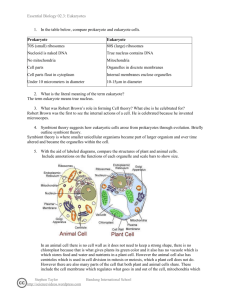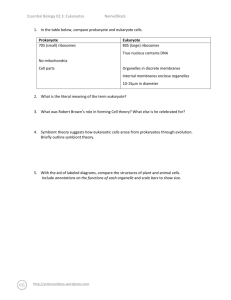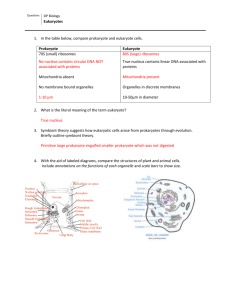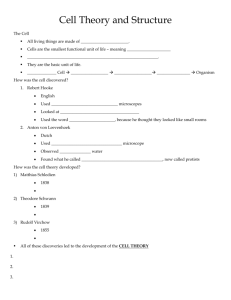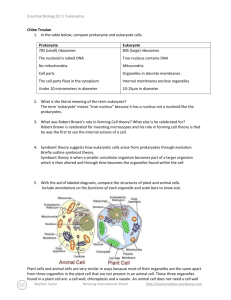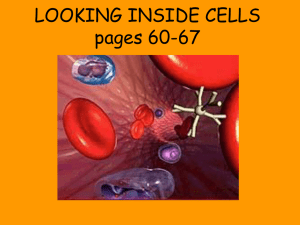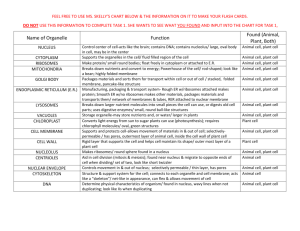Eukaryotes
advertisement
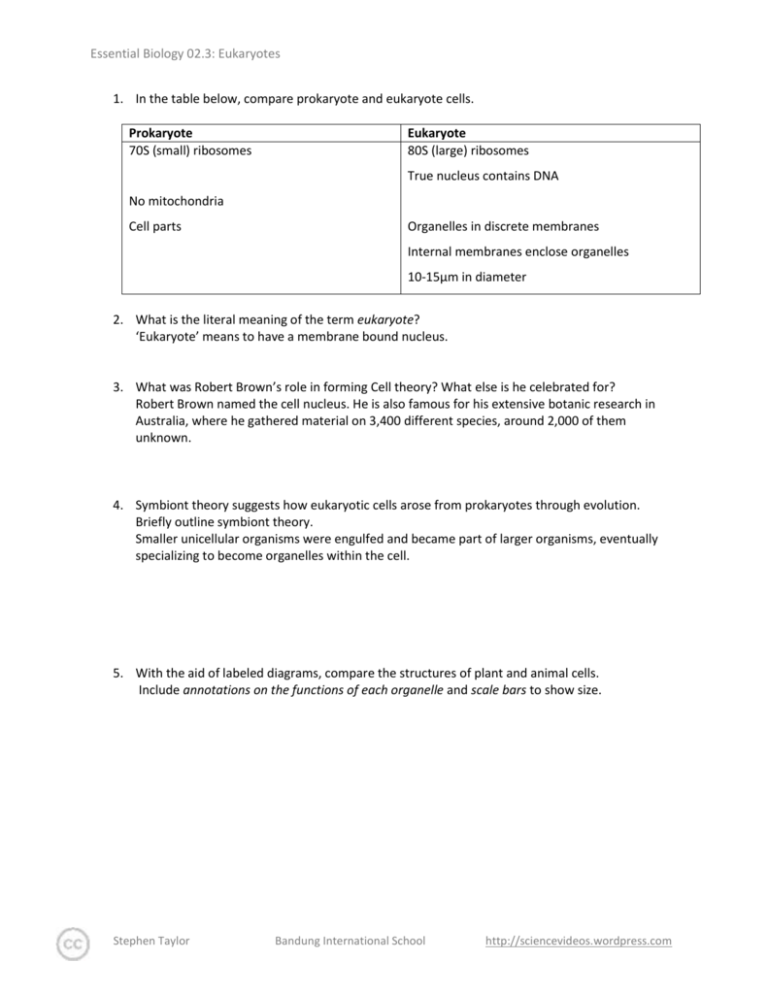
Essential Biology 02.3: Eukaryotes 1. In the table below, compare prokaryote and eukaryote cells. Prokaryote 70S (small) ribosomes Eukaryote 80S (large) ribosomes True nucleus contains DNA No mitochondria Cell parts Organelles in discrete membranes Internal membranes enclose organelles 10-15µm in diameter 2. What is the literal meaning of the term eukaryote? ‘Eukaryote’ means to have a membrane bound nucleus. 3. What was Robert Brown’s role in forming Cell theory? What else is he celebrated for? Robert Brown named the cell nucleus. He is also famous for his extensive botanic research in Australia, where he gathered material on 3,400 different species, around 2,000 of them unknown. 4. Symbiont theory suggests how eukaryotic cells arose from prokaryotes through evolution. Briefly outline symbiont theory. Smaller unicellular organisms were engulfed and became part of larger organisms, eventually specializing to become organelles within the cell. 5. With the aid of labeled diagrams, compare the structures of plant and animal cells. Include annotations on the functions of each organelle and scale bars to show size. Stephen Taylor Bandung International School http://sciencevideos.wordpress.com Essential Biology 02.3: Eukaryotes 6. Complete the table below to describe various eukaryotic organelles. Organelle Nucleus Structure (description) Region of the cell containing chromosomes, surrounded by a double membrane, in which there are pores. Function of organelle Storage and protection of genetic information on chromosomes. Ribosome Small spherical subunit consisting of two subunits, some attached to membranes, others free. The synthesizing of proteins. Lysosome Spherical organelles surrounded by a single membrane, containing hydrolytic enzymes. Digestion of structures ad molecules that are not needed in the cell. Mitochondrion Organelles surrounded by two membranes, the inner of which is folded inwards. Providing energy for the cell. Chloroplast Double-membrane containing layers of membranes (thylakoid stacks) and the pigment chlorophyll. Provides chlorophyll, which is used for photosynthesis. Rough Endoplasmic Reticulum Large, folding membrane structure found close to the nucleus, with ribosomes attached to some surfaces. Moves the ribosomes from the nucleus to cytoplasm. Stephen Taylor Draw it Bandung International School http://sciencevideos.wordpress.com Essential Biology 02.3: Eukaryotes Large, folded membrane structure found close to the plasma membrane, often with vesicles budding off the outer edge. 7. The image below shows a TEM micrograph of a liver cell. a. Identify the labeled structures. b. Calculate the magnification of the image. Mg = sbl/scn = 22 mm or 22,000 ųm/1 ųm Mg = 22,000 x c. Calculate the maximum diameter of the nucleus. As = ml/mg = 73 mm or 73,000 ųm/22,000 ųm As = 3.32 ųm Stephen Taylor Bandung International School http://sciencevideos.wordpress.com Essential Biology 02.3: Eukaryotes 8. State three differences between plant and animal cells. Plant cells have cell walls, they have chloroplast, and they have a vacuole. 9. Extracellular components are materials or structures which extend beyond the plasma membrane. Outline the role of an extracellular component in a plant cell and an animal cell. Plant: Animal: 10. In the space below, draw and label three specialized cells (two animal, one plant), outlining the relationship between structure and function in each case. Stephen Taylor Bandung International School http://sciencevideos.wordpress.com
